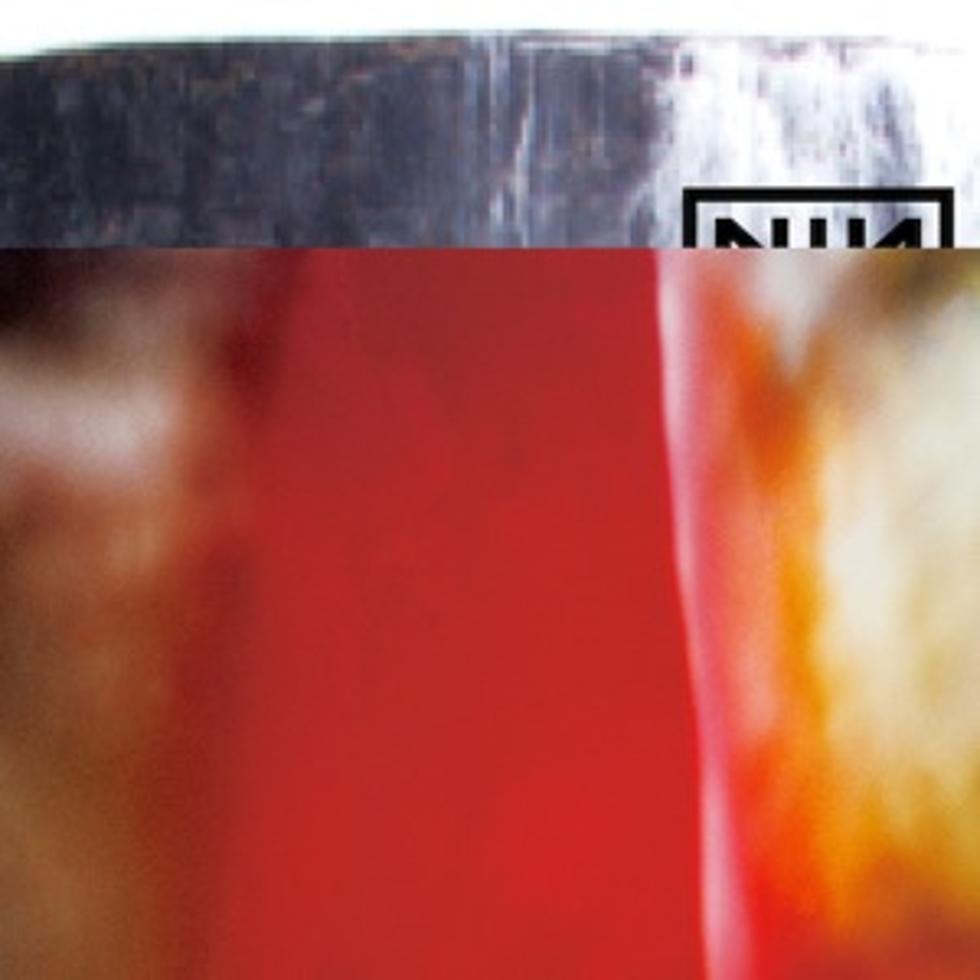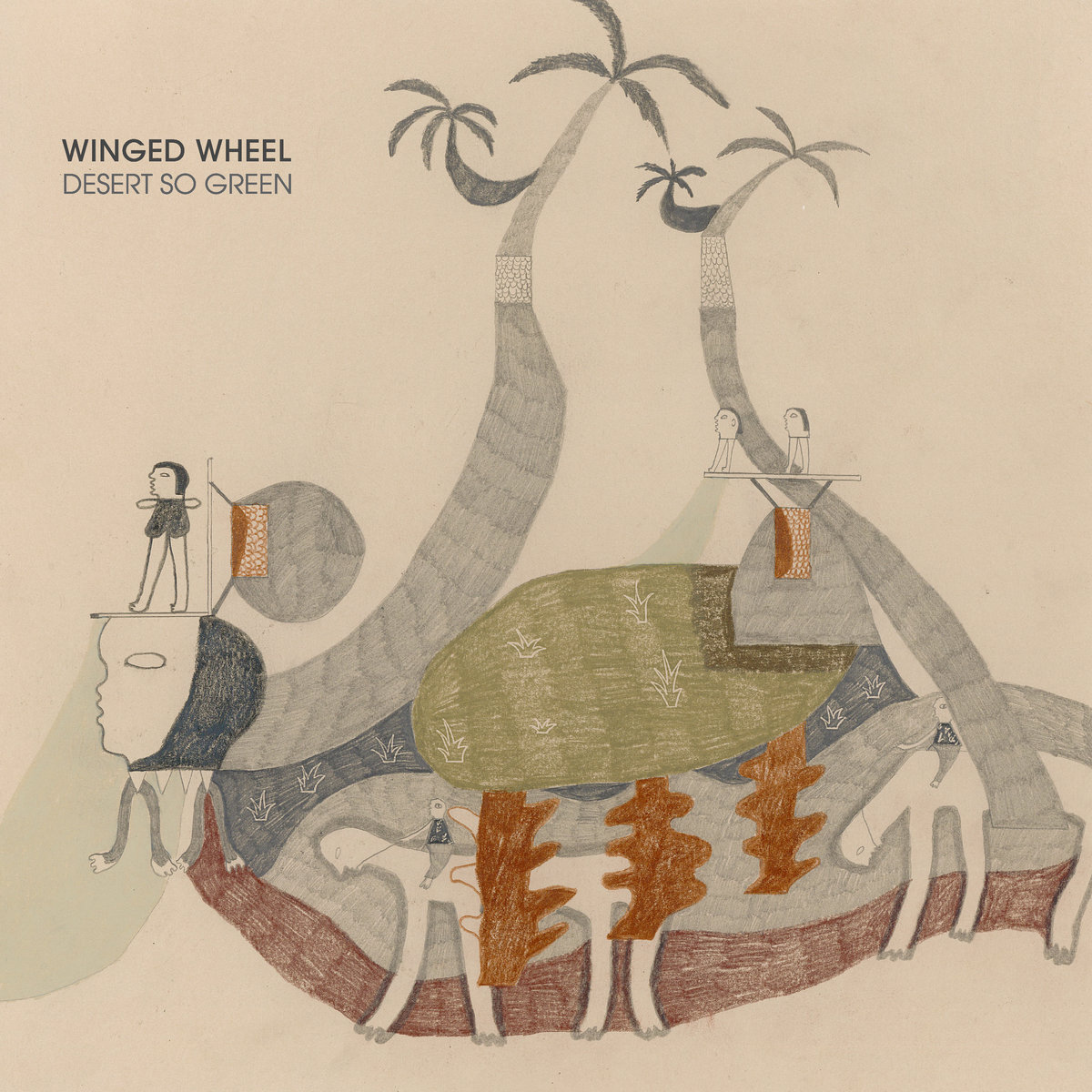To understand just how out-of-place Nine Inch Nails were in 1999, you only have to look at that year's MTV Video Music Awards. The 1998 VMAs, like so many of the years before it, were dominated by music that strove for seriousness -- rap, alt-rock, Madonna when she was making electronica and bringing Lenny Kravitz out onstage with her. Hole played the 1998 VMAs. So did Marilyn Manson and the Beastie Boys and the Dave Matthews Band. If Nine Inch Nails had played the 1998 VMAs, maybe they would've made sense.
But 1999 was different. 1999 was the first VMAs since MTV had introduced the after-school show Total Request Live, and so that year's show marked a sort of coronation of the new breed of flashy, upbeat, larger-than-life pop stars. Kid Rock opened the 1999 VMAs with Run-DMC and Aerosmith. Eminem closed the show with Dr. Dre and Snoop Dogg. Britney Spears and 'NSync performed together on a stage that was made up to look like a high-school classroom. The Backstreet Boys had made their VMA debut in 1998, but by 1999, they were conquering heroes. And somewhere in there were Nine Inch Nails, debuting the title track of the new double album that they'd release a few weeks later.
The performance that Nine Inch Nails gave that night is, by awards-show standards, pretty great. "The Fragile" opens with a heavy-hearted churn and ends with a fire-drone rock-out conclusion. The whole time, Trent Reznor projects a steely intensity. But there's a moment, about halfway through, where Reznor breaks. Bathed in blue light and surrounded by metal latticework, Reznor has his arms up in the Jesus Christ post. But he stops mid-line, laughing into his own armpit. Maybe he's just high as shit, or maybe he's helpless at the absurdity of the entire situation. Either way, it was pretty obvious to anyone watching that Trent Reznor, one of that decade's dominant rock stars, had become an instant relic.
At the time, Reznor told Spin, "When I see what's on that afternoon MTV voting thing, it's like, 'Who are these people? Who's buying this?' I know someone is, and I want them to buy my record, but -- good Christ! How did this happen?" It happened for a lot of reasons -- generational turnover, record-label focus-shifting, the cyclical trends that had been shaping pop music for decades. But a tiny part of the reason this happened is that Reznor himself wasn't around. By the time Reznor finished The Fragile, it had been five years since Nine Inch Nails had released their cultural-apex masterpiece The Downward Spiral.
Reznor hand't been completely absent; he'd toured and produced Marilyn Manson records and helped shape a couple of movie soundtracks. But he'd also disappeared into his New Orleans mansion, getting dangerously high and obsessively working over what would become The Fragile. Without him, the world spun on. And when The Fragile did come out, the world was not primed for it. The Fragile mostly got good reviews -- Spin named it Album Of The Year -- and it debuted at #1 and eventually went double Platinum. But Reznor clearly did not have the same steel grip over young America's imagination that he'd had when he was braying that he wanted to fuck you like an animal.
Reznor had to know that this was a possibility. He went to work on The Fragile while mired deep in depression, using all the tricks at his disposal to capture whatever was going on in his head. He marshaled all his considerable resources, bringing in an all-star team of collaborators. The Fragile is probably the only album to feature production work from both Steve Albini and Dr. Dre. Other contributors included King Crimson's Adrien Belew, Pink Floyd producer Bob Ezrin, My Bloody Valentine producer Alan Moulder, Helmet's Page Hamilton, Skinny Puppy's Dave Ogilvie, Chic's Tony Thompson. Reznor had access to pretty much every living headphones-music master, and it seems like he called most of them.
And yet The Fragile doesn't sound like any of those contributors. Reznor sublimated all those voices to his own vision -- a deep and internal churn that obliterated everything around it. Even after the synthpop throb of "Closer" had blown up, Reznor was mostly considered to be an industrial rock star, the guy covered in mud and making big noises at Woodstock '94. There are plenty of moments of all-out neck-crank rock power on The Fragile, but they're all off-kilter and wrong, like the stuttering math-rock riff on opening track "Even Deeper." Most of the time, though, Reznor was going into deep-drone territory, constructing an overwhelming digital sensory bath.
The songs from The Fragile that initially got the most attention were the ones that sounded the most like the old Trent -- the titanic howl-along chorus on "We're In This Together," the "fuck the rest and stab it dead" bit from "Somewhat Damaged," the way Reznor mercilessly tore into his old ally Marilyn Manson on "Starfuckers, Inc." ("Starfuckers, Inc." is up there with Company Flow's "Linda Tripp" on the extremely short list of great 1999 diss tracks. Reznor and Manson buried the hatchet soon enough, though, and Manson showed up in the song's video.) But years later, the moments from The Fragile that linger are the deepest and quietest -- the still ambience of the instrumental "La Mer," the delicate seething of "The Great Below," the strange synthetic death-march that ends "Pilgrimage."
[videoembed size="full_width" alignment="center"][/videoembed]
The Fragile is an immersion album, a 104-minute internal head trip where the sound design resonates more than the riffs or hooks or lyrics. To listen to The Fragile on headphones is to disappear into its world. You can listen to a song at a time, but it's a whole lot more satisfying to give yourself over to it, to let each pling and whirr and hum and dissolving scrape-sound sweep you away. But in 1999, huge mass audiences were, by and large, not willing to sacrifice their consciousnesses to Trent Reznor's cinematic imagination. Reznor's inheritors -- Manson, Korn -- had found more even more theatrical ways to sulk. Reznor was in his mid-thirties then, and even when his music was at its most tantrumy, it no longer scanned as teenage.
People joked about The Fragile when it came out -- about the cussing and the self-flagellation and the overbearing seriousness of it all. Pitchfork wasn't a big deal yet at the time, but Brent DiCrescenzo's pan is a small masterpiece of performative snark, and it reflects a lot of the sentiment I heard around The Fragile. But heard today, The Fragile sounds like a scream from the abyss -- a rich rock star putting all his studio expertise into letting the world know that he is not OK. "Tried to save myself but myself kept slipping away," Reznor mutters again and again, and the music around him howls and sputters so masterfully that you really have to believe him.
Reznor's self almost did slip away soon after he released The Fragile. Less than a year later, Reznor, in London on tour, overdosed on heroin. (Just like Mia Wallace in Pulp Fiction, he'd mistaken it for cocaine.) Reznor went into rehab, and he didn't release another album for almost six years. In the years since, he has thrived. He's emerged as a self-deprecating elder statesman, a rare '90s-vintage rock star who seems to have some idea how to use the internet. He's released some great albums and played some incredible shows. He's retired from the stage, and he's come back again. He's reinvented himself as a film composer and won an Oscar on his first time out. He's gotten married and had four kids. He's doing great.
And while Reznor has been repairing himself, the world has caught up to The Fragile. The reconsideration may have started about a decade after the album came out, when "The Day The Whole World Went Away" soundtracked the great trailer for the shitty movie Terminator: Salvation. I remember a lot of people saying, "Oh, right! That song!" A decade after the high teenpop era, it made a new kind of cultural sense. But then The Fragile had always had its cult, and it was a classic grower of an album. So it did what growers do. It grew.
"When [The Fragile] came out it felt like everyone hated it," Reznor told The New York Times in 2011. "And now it feels like it's everyone's favorite album, fan-wise." (In that same interview, Reznor also said that he should've released it as two albums, the way Radiohead did shortly thereafter with Kid A and Amnesiac. Would've been smart!) Twenty years after its release, it seems safe to say that The Fragile isn't the best Nine Inch Nails album; that's still The Downward Spiral. But The Fragile is an out-of-time landmark, a stirring and overwhelming dispatch from a dark place. Reznor hasn't done anything as powerful since. Not too many people have.
Nine Inch Nails are still making records, but those records mostly seem like hobbies for Reznor. Most of his work these days is in the film-score category. And yet Reznor's deep catalog of music still feels more of-the-moment in 2019 than it did two decades ago. This past summer, Lil Nas X shattered Billboard chart records with "Old Town Road," a song built from a sample of a Nine Inch Nails instrumental that Reznor had released in 2008. Reznor wasn't at this year's VMAs, but Lil Nas X was. And if Reznor had shown up, he wouldn't have been out of place anymore.






